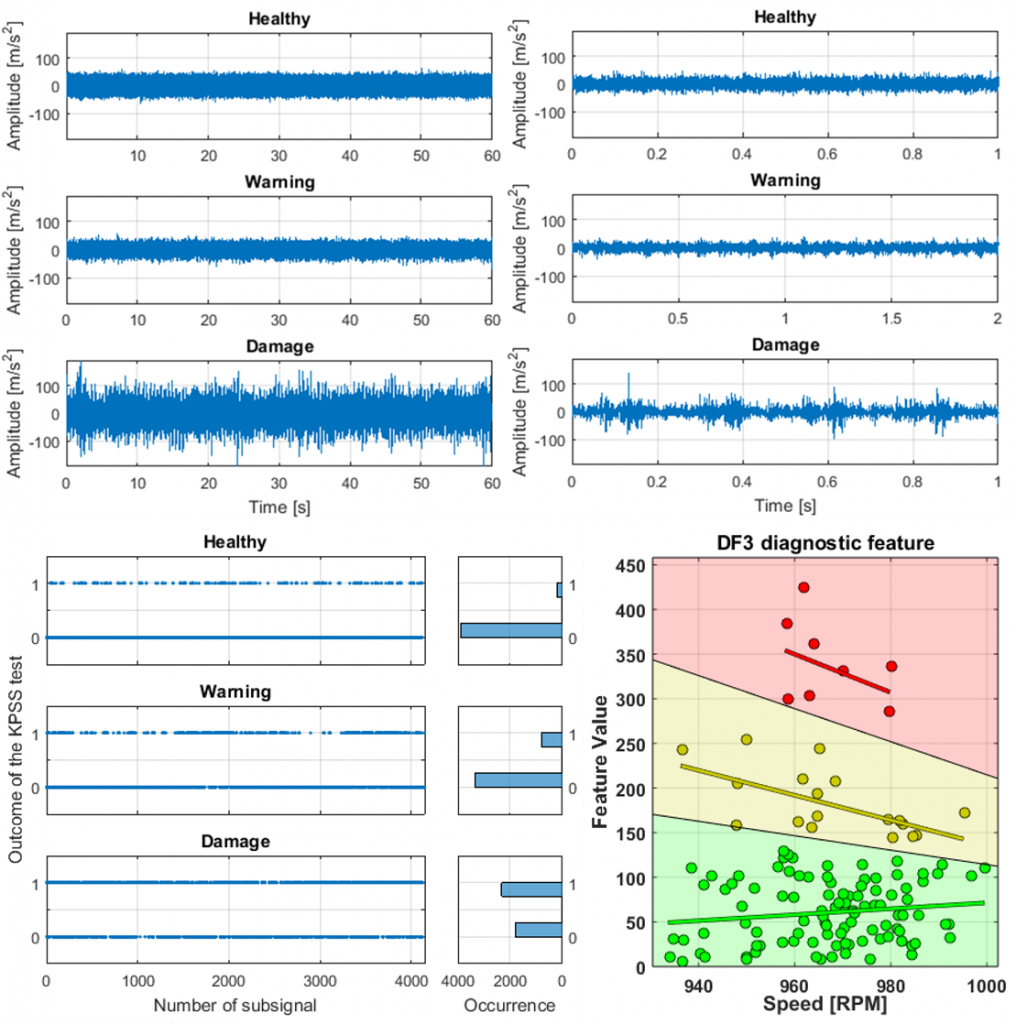Diagnostics of industrial machinery with the main focus on the machines operating in the mining industry is one of the most important branches of our activity. The diagnostic process is based on the analysis of diagnostic data that is either provided by the machine owner or is a result of a measurement session conducted on-site by our team. In practice, the aim of such a process is to detect and interpret the particular case of a fault that occurs within the machine.
In the area of machine diagnostics, as in any data analytics, there is a lot of possible ways to achieve the desired goal. As an example, the picture below presents the results of our past research conducted towards defining high-level criteria for the assessment of the technical condition of gearboxes, that are a part of belt conveyor driving stations in the mining industry. Top panels present examples of vibration signals measured on the gearbox during different stages of its lifetime, and the measurement was performed via the DiagManager system presented here. As the labels suggest, signals come from the machine in different technical condition (right panels show the short segments of what is presented on the left panels). Even unexperienced observer can easily see that signals are different from each other between different states. However, the goal is to be able to define the state of a machine in an automatic, unsupervised way based only on the newly measured signal.

In the bottom left panels, we visualize the results of the statistical approach to the signal analysis. We took advantage of the property of the signal called stationarity. It turned out that based on that feature evaluated on the signals after appropriate transformations, it is possible to distinguish between signals coming from the machines with different technical conditions. Related research:
Integration approach for local damage detection of vibration signal from gearbox based on KPSS test Proceedings Article In: pp. 330–339, Springer International Publishing, 2019. |
The approach visualized by the bottom right panel was vastly different. Firstly, based on the previously accessible knowledge it was possible to construct three diagnostic features related to shafts, meshings, and bearings (hence DF3 in the figure title, where this feature describes the bearings). The features themselves were based on the analysis of parts of the signal spectrum that carry the most information about the interactions regarding a given machine part (bearings in this case). Finally, feature values describing many individual machines have been automatically classified into three classes describing three states: healthy machine, machine in the state of developing damage, and machine in bad condition, that can fail at any moment. This allows building the model that can be used to evaluate technical condition of such machines in the future. Related research:
In: pp. 67–72, JVE International Ltd., 2017. |
Our experience includes diagnostics of various machines:
- Drive train components (i.e. electric motor, gearbox);
- Other types of machines with rotating elements (i.e. ore crusher, vibrating sieving screen, reciprocating gas compressor);
- Self-propelled machines (i.e. loader, hauling truck, roadheader)
In the field of diagnostics DMC specializes in vibroacoustic data analysis, but we work with any type of data, not only sensor-based time-series signals but also images, sound or any other.
